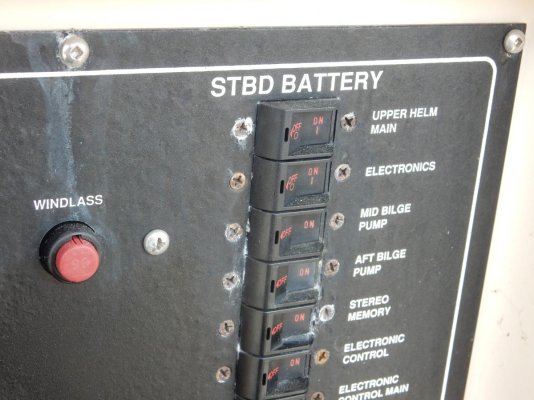spencers
Member
Hi, I have a 2006 Mainship with what I think are Carling Technologies breakers. The problem I have is that I cannot turn any of them off. One that is turned off I cannot turn back on.
They seem to be stuck.
These breakers have a small slot at the side that maybe has to have a small screwdriver or something pushed in to release the rocker.
I cannot find anything on Carling's website the same.
I think I have attached a photo.
They seem to be stuck.
These breakers have a small slot at the side that maybe has to have a small screwdriver or something pushed in to release the rocker.
I cannot find anything on Carling's website the same.
I think I have attached a photo.




